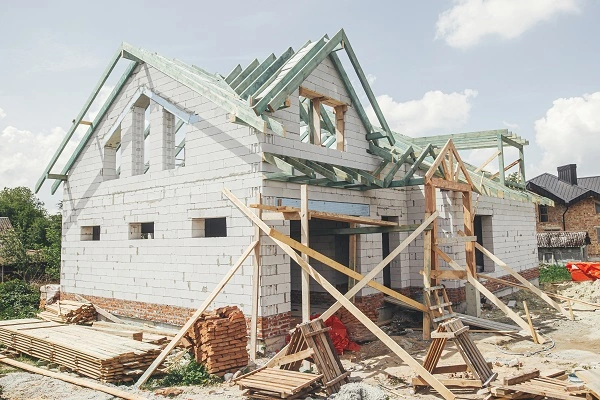Any individual or entity who must measure anything can find measuring software invaluable. With measurement software, you can quickly complete tasks involving blueprints or floor layouts. There is an abundance of different measuring programs on the market today. Some are superior to others. Yet, the key challenge remains how best to select suitable options based on specific needs.
An advanced measuring software application enables you to easily compute volume, measure area, perimeter, and length, and perform other vital calculations. Measuring software is not only used directly for building projects but can also be used for other purposes; for instance, it could help quickly determine how much wood your project requires.
What Does Construction Takeoff Encompass?
A takeoff, sometimes known as a material takeoff or quantity takeoff, provides all the materials required for the project as well as an estimate of labor expenses involved with assembling them. Simply stated, builders use takeoff estimates to estimate how many materials will be necessary to complete a given task.
Takeoffs are essential in construction because they provide an estimate for projects of any size or scope, from smaller jobs requiring little labor and supplies to complex ones that necessitate more resources to complete. An accurate takeoff eliminates the chance that contractors underbid and, therefore, risk underbidding or overbidding and losing work altogether. two possible scenarios if their bids don’t match exactly.
Contractors use takeoffs for various reasons, including cost estimates and bid preparation. Here, we explore each scenario further.
Bid Submission:
Being familiar with how much material will be needed for an entire building project is paramount when making bid submissions. This enables you to assess exactly how much your bid will include and avoid losing money by underbidding or overbidding. Either could cost money and reduce your chances of winning the bid altogether; making an exact takeoff increases those chances considerably.
Calculating Estimates using blueprint measuring software.
You may ascertain which materials and supplies will be needed by calculating their total costs, whether by taking an estimate from construction takeoff data or guessing estimates yourself; taking takeoff provides more precise results. However, once items have been decided upon, it’s essential to calculate overall expenses, such as labor hours, waste percentage, taxes, etc., as part of this cost estimate process.
Determine the quantity of materials required:
Whether you submit a bid, it is of the utmost importance to know exactly how much material and supplies will be necessary for every job. Underestimating supply needs could force additional trips out to get extra supplies, which could delay site work.
Takeoffs can help identify the resources necessary for any project and save money and time while working on it. A construction takeoff simply lists items necessary for its completion; it does not represent pricing estimates of supplies required. Estimates, on the other hand, take into account material costs as well as project-related expenses and are the inverse of takeoffs; you don’t get estimates in lieu of takeoffs.
As soon as you understand what a takeoff in the building industry entails, you might wonder who performs it. Contractors and subcontractors play a significant role in conducting takeoffs since they know how to estimate how many supplies will be necessary for the completion of any given task.
Estimators will price materials after they receive the takeoff proposal from contractors; cost estimation of the building is one key component of this procedure.
What to look for when performing Takeoff for a Construction Project?
A takeoff is the process of estimating materials necessary for any given project. It includes details to provide accurate pricing and quantities for projects. There should be nine critical elements within a construction takeoff, which this part provides you with.
Labor Costs:
When it comes to labor cost calculations, wages paid to project participants such as supervisors, project managers, and construction workers are considered. Thus, you must determine exactly how many employees will be necessary daily to complete various activities on schedule.
Material Expenses:
Material expenses cover the expenses related to supplies needed for your building project, such as steel, concrete, wood products, and plumbing fixtures that you will purchase unfinished for use during assembly or renovation of buildings.
Equipment:
Equipment costs encompass any expenses related to purchasing, renting, or using machinery and equipment used for building. Excavators, power tools, and cranes are examples of such costs.
Admin Costs
Administration costs refer to expenses related to procurement and site monitoring. From project management and coordination through purchasing to site inspection, these are known collectively as admin expenditures.
Subcontractor Expenses:
These expenses will cover any specialist or outside work required for your project.
Other Expenses to look for:
Insurance, general administrative expenses, permits, and project management fees can all add up quickly as overhead expenses.
Contingencies are part of the construction industry to describe unanticipated events like equipment breakdowns, labor strikes, weather-related delays, unforeseeable site conditions, or modifications that change scope and pose safety threats.
Indirect Costs
Indirect costs include costs not directly connected with a building project, such as utilities, site security measures, temporary housing accommodations, and environmental compliance.
Markup refers to any extra funds added to a construction project’s direct expenses that help calculate its final selling price. This enables contractors and building businesses to cover the costs while turning a profit.
How does Blueprint takeoff software help?
In construction, takeoff is an indispensable operation that may initially seem daunting. Takeoffs from designs can be either manually, digitally, or automatically using three distinct processes.
Manual Takeoffs
Traditional paper blueprints and plans remain one of the best methods for taking off blueprints by hand, as this remains one of the preferred means for building design specialists to calculate accurate material takeoffs.
Though precise takeoffs can be done manually, an estimator is responsible for finding them accurately. An estimator must read drawings accurately and prepare all works, including basic construction plans, plumbing schematics, and electrical plans, as well as any annotations and symbols that might suggest materials required in advance.
Pencils, markers, and colored pens help in conducting manual takeoff to distinguish objects. As this demonstration shows, this practice can be costly and time-consuming. That will increase your expense account.
Digital Takeoffs
Your takeoff process runs more efficiently when your team and you use appropriate digital software tools. With them, it becomes much quicker to add materials via pre-built libraries while simultaneously compiling an order list for suppliers to see.
You will also receive information regarding your construction crew’s performance and timetable. This allows you to see which bid each member is working on, and their percentage win rate.
Software to Automate Takeoff (ATI)
Automated takeoff software provides another effective means of estimating construction that increases productivity, eliminates human error, and simplifies takeoff procedures. Remembering how essential efficiency and precision are in construction projects, software that automates takeoff can provide accurate material amounts while simplifying takeoff procedures.
So, how exactly does automated software benefit material takeoff? This program automates material takeoff by eliminating manual measurements and computations with cutting-edge algorithms and technologies. Digital blueprints or PDF/CAD files provide the data needed for calculation.
Automated takeoff software offers digitalized measurement tools that make takeoff procedures accurate and consistent. By taking measurements right on a digital drawing, these tools allow for the measurement of lengths, volumes, and areas directly for takeoff purposes, ensuring an efficient takeoff procedure.
Summary
Conducting an in-depth investigation is the key to accurately estimating materials required and associated costs for large-scale projects. Accuracy should always come first when conducting construction takeoffs.
Real-time measurement updates are also possible with automatic takeoff software, thanks to real-time measurement updates being delivered automatically whenever digital drawings change. When updated by this software, their amounts can also be automatically recalculated based on the information you enter. Automatic data updates can update them in real-time, and amounts entered are recalculated accordingly.




